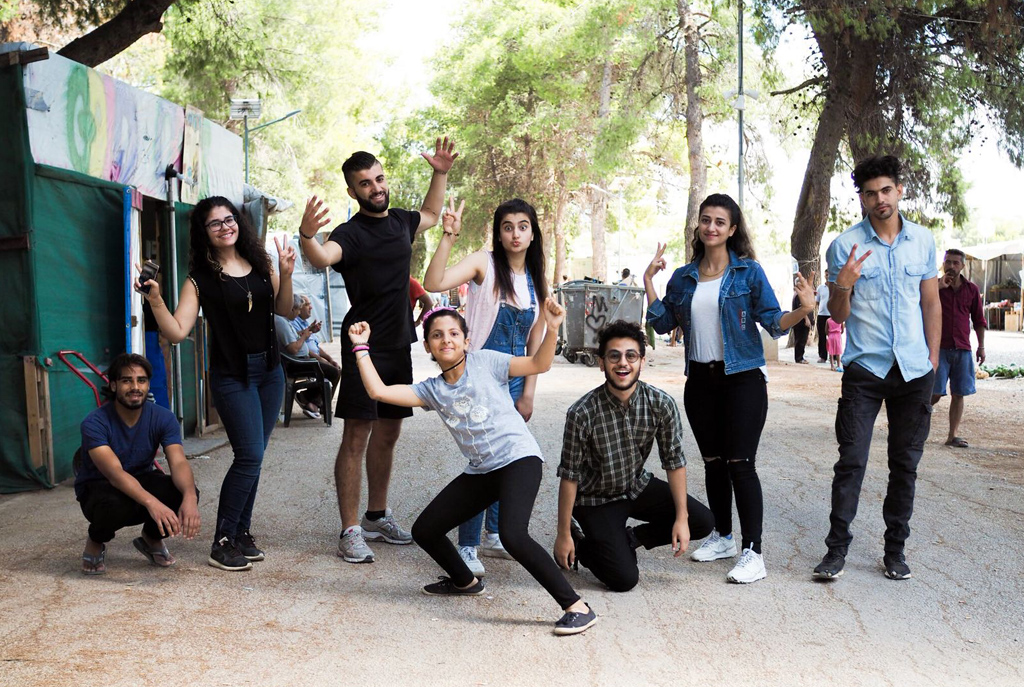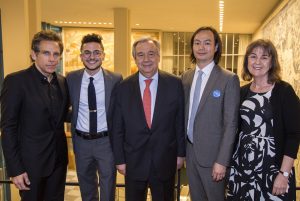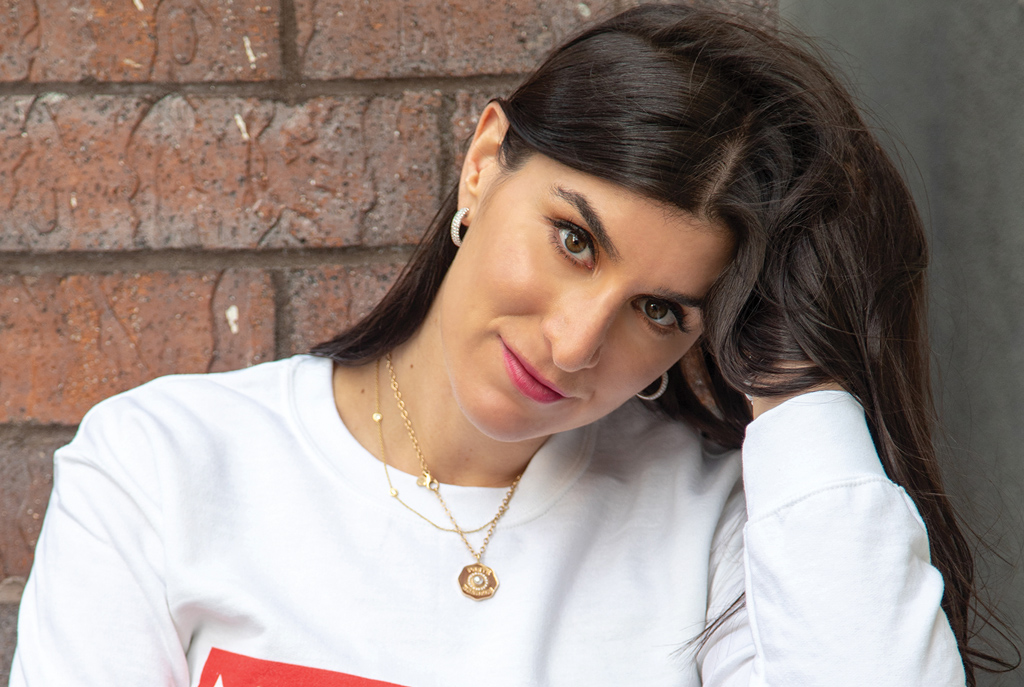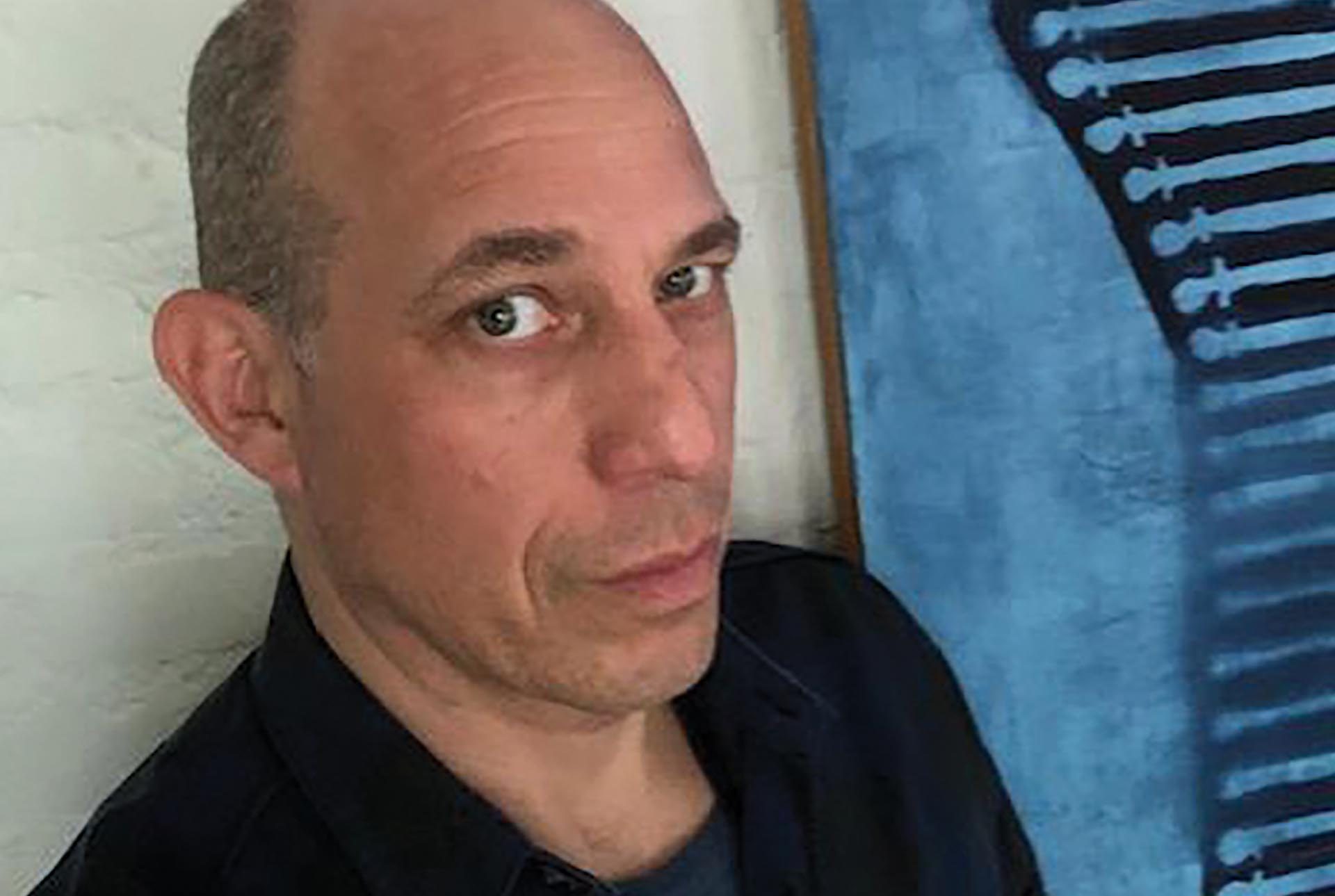Narratio: Art Through/Beyond Displacement

Having found his way from Baghdad, to South Dakota, to Wesleyan, and having found his own voice in the process, Ahmed Badr ’20 writes about his vision to help other young people find theirs.
A story is always made up of smaller stories, which all come together to form a narrative that we might someday claim as our own.
Mine started in Baghdad, Iraq, on a fateful night in the summer of 2006, when our home was bombed by militia troops. We became refugees, and a week later, we moved to Syria, which at the time was a safe haven for those fleeing war and persecution. We lived in Syria for two years before being resettled to the United States in 2008.
Arriving in the United States came with its own set of challenges, chief among them the need to find a place to call home and an identity that I could call my own. Much like any teenager, displaced or otherwise, I wanted to understand my place in this world, and figure out which communities I belonged to.

I realized that I stood in the middle of two experiences, two stories, one American and one Iraqi—and began a process of learning how to understand both. During my sophomore year of high school, I received a scholarship to attend a journalism conference in Washington, D.C., and from then I decided to start a small blog for my own writing and photography. All of a sudden, the ridiculous questions I used to be asked by my classmates (“are there trees in Iraq?” and “Is Osama Bin Laden your cousin?”) turned into curious inquiries about the work I was beginning to self-publish. Having the blog allowed me to tell stories on my own terms, stories that could transcend our previous displacement and put me in the driver’s seat when it came to forming a narrative of my life that moved beyond tragedy and pain.
Those events form a small story within my larger journey, which continues to be written day after day. Over the past few years, I’ve been on a mission to create spaces for young people to share their stories with the world, through art, photography, poetry, and other forms of storytelling.
Shortly after the conference and the small blog, I decided to create Narratio, an online platform that provides space for young people from across the world to publish their creative work and share their voices with the world.
I found Wesleyan on a sleepy flight from Istanbul to Houston. My family and I were returning from our first trip to Iraq in nearly a decade, and I sat hunched in my seat, watching a documentary on US colleges called The Ivory Tower. At the time, I was halfway through applying to 24 schools; I wanted to cast my net as wide as possible, and since my academic plans were not settled yet, many schools fit what I was looking for (or thought I was looking for). At some point in the documentary, there were a series of interviews with college presidents, and there was one individual who was most memorable: Michael Roth. Out of all of the others featured, he spoke in the most genuine and down to earth way. That’s when I first heard about Wesleyan, and it was then that I decided to apply.
Since Narratio’s founding in high school, we’ve grown to over 15 countries, and we continue to conduct storytelling workshops across the world—in Greece, Trinidad and Tobago, France, and Italy. Halfway through my freshman year at Wesleyan, I conducted a storytelling workshop with Upward Bound, a University-sponsored high school tutoring and enrichment program. One of the students in that workshop, Chelsea Anthony, wound up publishing her work on the Narratio platform, and her poems were eventually used in a choral arrangement by Professor Paul Rardin of Temple University. A year after Professor Rardin found Chelsea’s poems, he flew her and her brother out to Pittsburgh to witness the concert where her work would make its world premiere.
Narratio’s growth would not have been possible without the support and guidance of Wesleyan advisors, professors, and my fellow classmates. I owe so much to Makaela Kingsley ’98, MALS ’05, the director of the Patricelli Center for Social Entrepreneurship, who taught me that there exists a powerful synergy between academics and entrepreneurship, and who gave me the courage and support to find that synergy over the past few years.
And to Professor Alice Hadler, who gave me space to explore my identities in the classroom, and to tell stories beyond my own—giving me the mentorship and kindness that made me realize that there are few things more powerful than writing and community engagement—a combination that continues to change my life every single day.
Over the past couple of years, Narratio has been focused on displaced young people, and providing opportunities for their creative expression to claim its place on the global stage. We partnered with Lighthouse Relief to publish three issues of the Ritsona Kingdom Journal, a storytelling magazine produced entirely by the displaced young people of the Ritsona Refugee Camp in Central Greece.
This past summer, we launched the Narratio Fellowship, an intensive month-long storytelling program for 11 resettled refugee youth.
Launched in 2019 in collaboration with Syracuse University and the North Side Learning Center (NSLC) in Syracuse, New York, the program utilizes a multidisciplinary approach to self-expression that includes workshops, guest speakers, and site visits, culminating in a week-long trip to New York City and a performance at the Metropolitan Museum of Art, meetings at the United Nations, Squarespace, and The New York Times.
Our work continues in its various forms, through podcasts, multimedia exhibits, and workshops—all centered around storytelling’s ability to humanize and unite. I have been incredibly privileged to share my story across the world, and the next stage of our work is centered around creating more spaces where other stories can rise to the surface, regardless if they are born out of displacement or not.
The “refugee experience” is not a singular one, and we must ensure that displaced young people have the means of speaking for themselves; they must be able to tell their own stories, on their own terms.
—Ahmed Badr ’20
Ahmed Badr ’20 is a writer, social entrepreneur, poet, and former Iraqi refugee. Working at the intersection of creativity, displacement, and youth empowerment, his work has been featured and supported by Instagram and NPR, among other outlets. A senior at Wesleyan, where he is an Allbritton Center for the Study of Public Life fellow, he also serves as one of 17 United Nations Young Leaders for the Sustainable Development Goals in the Office of the UN Secretary General’s Envoy on Youth, and is currently working on his debut book, due from Andrews McMeel in 2020.
CAPTION: Ahmed Badr ’20 (third from right) posing at the Ritsona Refugee Camp near Chalkida, Greece, after a storytelling workshop at Lighthouse Relief’s Youth Engagement Space. (Photo courtesy Edward Grattan)



